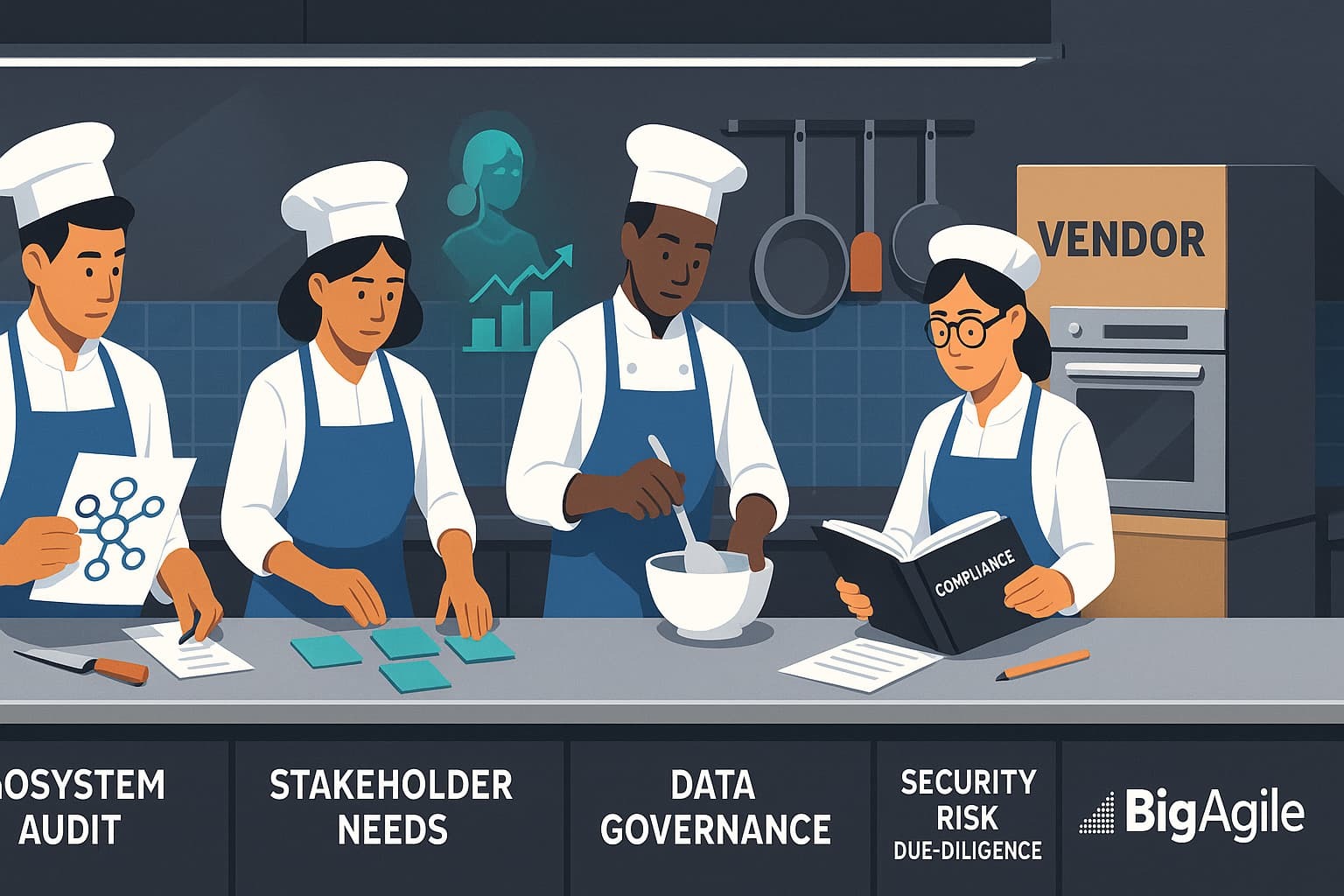
Did You Know?
The rush to sign a contract with the first impressive Customer Data Platform (CDP), marketing automation stack, or shiny Gen-AI tool often backfires. Brain+Trust’s eye-opening post “The Hidden Cost of Hasty Innovation: Why Internal Discovery Must Precede Vendor Selection” chronicles how skipping an internal discovery phase adds 40-60% to implementation costs, extends time-to-value, and leaves security or compliance gaps that can result in hundreds of millions in fines. So well put together!
Five revelatory discovery dimensions.
These emerged for me (and apply to my consulting practice as well, in Business Agility):
- Ecosystem Mapping & Integration Architecture: auditing current systems and APIs to stop new silos before they start.
- Stakeholder Needs & Change-Readiness: cross-functional interviews that surface conflicting workflows and reskilling needs.
- Data Governance & Privacy Compliance: aligning with GDPR, CCPA, HIPAA, and FTC rules before a vendor demo ever loads.
- Security & Risk Assessment: modeling new threat surfaces in an LLM-in-everything world.
- Financial & Operational Due-Diligence: whole-life TCO modeling and vendor viability checks.
So What?
Utilizing all the tools, materials, and knowledge in organizational change leadership, we can outline some issues and how they relate to that material. When discovery precedes vendor courting, companies reap 300-500% ROI thanks to lower integration costs and faster adoption.
Kotter warned that skipping early-stage urgency and vision leads to transformation derailment; failing discovery is exactly that misstep.
Porter reminds us that competitive advantage rests on deliberately chosen activities, discovery clarifies which activities matter before technology locks them in.
From a Flow-Based Product Development view (Reinertsen), discovery shrinks batch sizes and queues; we decide what not to build before sunk costs accumulate. And ADKAR’s first two building blocks; awareness and Desire, are impossible without surfacing stakeholder pain points up front.
Now What?
- Before any RFP goes out, institute a four-phase discovery sprint (current-state, future-state, gap analysis, vendor strategy).
- Create a cross-functional “Supermind” coalition of architecture, security, data science, and product ops, echoing Malone’s research, that owns discovery artifacts and defines success metrics.
- Embed Lean “go-see” gemba walks inside discovery: interview front-line teams, observe data hand-offs, and map waste.
- Apply a “two-way door” investment lens: low-code proofs in a sandbox before enterprise roll-out.
- Braid AI ethics & privacy checkpoints into every discovery deliverable; automate red-flag scans of vendor models.
- Use ADKAR scorecards to gauge each business unit’s readiness; launch micro-learning bursts to close Knowledge and Ability gaps before go-live.
- Budget discovery as CAPEX-worthy R&D, communication should frame the exercise as a strategic hedge, not overhead.
Catalyst Leadership Questions
Great leaders ask open-ended, evidence-seeking questions that surface blind spots, spark cross-functional dialogue, and invite teams to co-own solutions. The aim is less about getting a quick status update and more about revealing hidden dependencies, misaligned incentives, and untested assumptions, then steering the conversation toward measurable next steps.
Use the questions below as catalysts: each one pairs a high-level inquiry with a probing prompt to help your team visualize reality, quantify impact, and stress-test their plans.
| Catalyst Question | Probing Prompt |
| Where are hidden data hand-offs slowing us down? | Ask team leads to sketch one week of data flow, what surprises them? |
| Which compliance exposure keeps our GC awake? | Run a mock regulator audit on last year’s data streams, what fails first? |
| Do we truly know our total cost of integration? | Model three years of licensing, labor, refactoring, and deprecation; how does that compare to discovery spend? |
| How aligned are stakeholder success metrics? | List each BU’s top KPI next to the proposed tool’s outcome, where do they conflict? |
| What is our Plan B if the vendor sunsets? | Draft an exit-strategy playbook and stress-test it with scenario planning. You should really not have just one exit. |
Innovation isn’t a drive-thru; it’s a kitchen, you must prep before you cook. Internal discovery is that "mise-en-place": skip it and you burn the entrée and the budget. Audit first, buy second, and let AI, data governance, and human ingenuity garnish the dish. Hungry for fundamental transformation? Grab the spatula, discovery starts today.
Clarity, like agility, is only one discovery away.